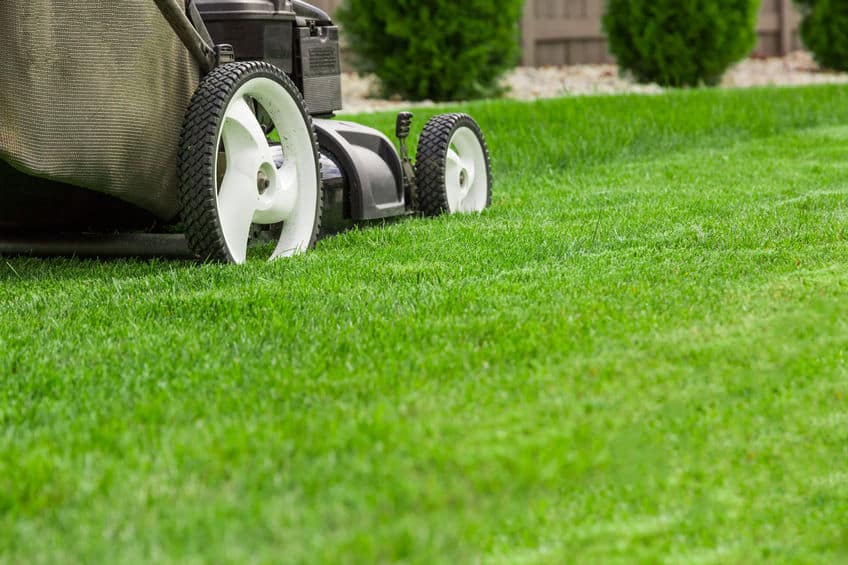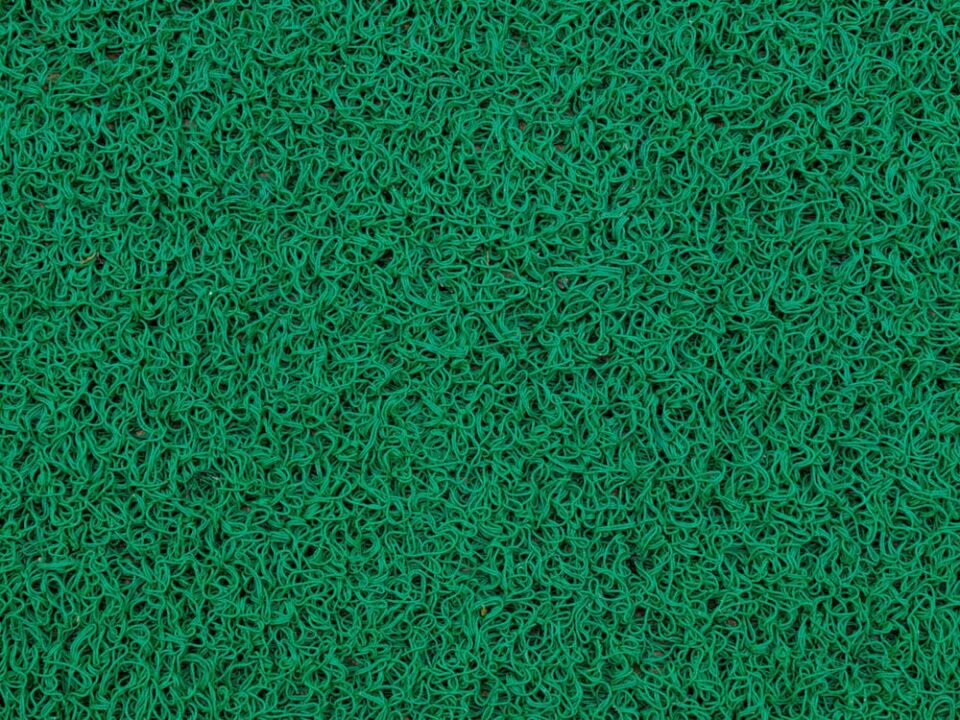

How to Care for Your Lawn
February 14, 2024
How Big is a Roll of Sod
February 28, 2024When Should You Cut New Sod
Sod, also known as turfgrass, offers a convenient and efficient way to establish a lush, green lawn quickly. Taking care of it properly is very important to keep it healthy and strong for a long time. One crucial aspect of sod care is knowing when to cut it for the first time. In this comprehensive guide; when should you cut new sod, we’ll delve into the factors to consider and the steps to take when determining the right time to cut new sod.
When Should You Cut New Sod: Complete Guide
Understanding New Sod
Before diving into when to cut new sod, let’s briefly understand what it is. Sod consists of grass and the soil beneath it, which is grown on specialized farms and then harvested as a thick mat. This pre-grown grass provides instant green coverage when installed on a lawn. Freshly laid sod offers immediate aesthetic appeal, helps prevent soil erosion, and reduces weed growth. However, it also comes with challenges, such as proper establishment and maintenance.
Factors to Consider Before Cutting New Sod
Several factors influence the timing of the first cut on new sod:
1. Time since Installation:
- New sod requires time to establish its roots firmly in the soil before it can withstand the stress of mowing.
- Typically, sod should be given at least two to three weeks after installation to allow for root development. The specific timing can change based on factors like the type of grass, soil condition, and weather.
2. Grass Growth and Establishment:
- Before cutting new sod, ensure that the grass has reached an adequate height and density to withstand mowing without being damaged.
- The best cutting height can change based on the type of grass in the sod. Generally, it’s recommended to wait until the grass reaches around 3 to 4 inches in height before the first cut.
- Additionally, the grass should have established a dense turf cover, indicating healthy growth and readiness for mowing.
3. Weather Conditions:
- Weather is important when deciding when to cut new sod. It’s best to pick a day with moderate temperatures and humidity for mowing. Avoid cutting when it’s extremely hot or dry, as this can harm the grass and slow down its growth.
- It’s also advisable to avoid mowing wet sod, as soggy soil can lead to uneven cuts and damage to the grass.
4. Soil Moisture Levels:
- Proper soil moisture is essential for healthy sod growth and successful mowing.
- Sod should be neither too dry nor too wet when cutting. Mowing dry sod can result in stress and damage to the grass, while mowing wet sod can lead to soil compaction and uneven cuts.
- To assess soil moisture levels, squeeze a handful of soil from the lawn. It should feel moist but not waterlogged.
5. Equipment Readiness:
Before you start cutting your new sod, make sure your lawn mower or sod cutter is working well. Check the blades to see if they are sharp and set to the right height for cutting. Look over the mower or cutter carefully for any damage or problems, and fix them before you begin cutting.
Signs that New Sod is Ready to be Cut
How do you know when your new sod is ready for its first cut? Look out for these signs:
- Grass height and density: The grass should be tall enough to withstand cutting and have a dense, uniform appearance.
- Root establishment: Gently lift a corner of the sod to check for well-established roots.
- Color and health of the sod: Vibrant green color and overall health indicate readiness for cutting.
- Absence of visible seams: Sod pieces should have merged seamlessly, indicating proper integration.
- Firmness of the soil: The soil needs to be strong enough to hold up the mower without leaving marks.
Steps for Cutting New Sod
Once you’ve determined that your new sod is ready for its first cut, follow these steps:
1. Preparing the Lawn Mower or Sod Cutter:
- Start by ensuring that your equipment, whether it’s a lawn mower or a sod cutter, is clean, properly fueled, and in good working order.
- Clean any dirt, grass clippings, or debris from the mower’s blades, deck, and underside to ensure optimal cutting performance.
- Check the oil and fuel levels and refill as needed to prevent interruptions during the mowing process.
- Inspect the mower’s tires or wheels for proper inflation and ensure that all safety features, such as the blade engagement system and kill switch, are functioning correctly.
2. Choosing the Appropriate Cutting Height:
- Each type of grass has its own ideal height for healthy growth. Refer to the recommended cutting height for the type of grass in your sod.
- Adjust the height of your mower or sod cutter to match the height you want the grass to be. Most mowers have adjustable cutting height settings that can be easily modified.
- Cutting the grass too short can stress the sod and inhibit growth, while cutting it too tall may result in a thatch buildup and uneven turf. Aim for the recommended height to promote healthy lawn growth.
3. Clearing the Area of Debris:
- Before starting the mowing process, thoroughly inspect the lawn and remove any rocks, branches, or other debris that could damage the mower or pose a safety hazard.
- Clearing the lawn of debris also ensures a smooth and uninterrupted mowing operation, allowing the mower to move freely without obstruction.
- Take extra care to remove any large or sharp objects that could potentially damage the mower’s blades or cause injury to the operator.
4. Cutting the Sod in Straight Lines:
- When mowing new sod, it’s essential to mow in straight lines to achieve a neat and uniform appearance.
- Start by mowing around the outside of the lawn to make a straight border. Then, mow inward in straight rows.
- Make sure to slightly overlap each mowing pass to cover the entire area evenly and prevent any patches of uncut grass between rows.
- Mowing in straight lines also helps to minimize the risk of scalping or uneven cutting, resulting in a more professional-looking finish.
5. Proper Disposal or Reuse of Cut Sod:
- After cutting the sod, it’s crucial to get rid of the clippings properly to avoid covering the grass or causing thatch to pile up.
- Consider composting the cut sod if it’s free from weeds or pesticides. Grass clippings contain lots of nutrients and can be put back into the soil to help your lawn grow better.
- Alternatively, you can reuse the cut sod to fill in bare spots or patch damaged areas in your lawn. Simply lay the sod pieces in the desired location and ensure good soil contact for successful establishment.
By following these steps for preparing to cut new sod, you can ensure a successful and efficient mowing operation that promotes the health and beauty of your lawn. Proper equipment maintenance, careful adjustment of cutting height, thorough debris removal, and responsible disposal or reuse of cut sod are essential for achieving optimal results.
Tips for Cutting New Sod
To achieve the best results when cutting new sod, keep these tips in mind:
- Avoid cutting too soon: Wait until the grass is well-established before mowing to prevent damage.
- Regularly inspect the sod for readiness: Check the grass height, density, and overall health regularly to determine the optimal cutting time.
- Adjust cutting height based on grass type: Different grass species have different cutting height requirements, so be sure to adjust your mower accordingly.
- Keep blades sharp for clean cuts: Sharp mower blades minimize stress on the grass and promote healthy growth.
- Follow manufacturer’s guidelines for equipment use: Refer to the owner’s manual for your mower or sod cutter for specific instructions on proper use and maintenance.
Post-Cutting Care for New Sod
After cutting your new sod for the first time, it’s essential to provide proper post-cutting care:
- Watering the freshly cut sod: Ensure that the lawn receives adequate moisture to promote recovery and growth.
- Fertilizing to promote growth: Use a balanced fertilizer to give your grass the nutrients it needs to grow healthy.
- Monitoring for signs of stress or disease: Watch for signs of stress like wilting or changes in color, and deal with them quickly.
- Avoiding heavy foot traffic: Minimize foot traffic on the newly cut sod to allow it to recover without damage.
- Patience and allowing time for recovery: Give the lawn time to recover from the stress of cutting before mowing again.
Common Mistakes to Avoid
To ensure success when cutting new sod, avoid these common mistakes:
- Cutting sod too early: Premature cutting can damage the grass and hinder its establishment.
- Neglecting to adjust cutting height: Cutting the grass too short can stress the sod and inhibit growth.
- Overlooking post-cutting care: Proper care after cutting is essential for the sod’s recovery and long-term health.
- Ignoring weather conditions: Mowing sod when it’s very hot or dry can harm the grass and slow its growth.
- Using improper equipment or techniques: Mowing sod when it’s very hot or dry can harm the grass and slow its growth.
Conclusion
In conclusion, at Ace Landscapes, we prioritize the proper care and maintenance of your lawn, including the crucial step of cutting new sod. By considering factors like grass height, root establishment, soil moisture, and equipment readiness, we ensure that your sod is ready for its first cut. Our team emphasizes the importance of preparing your equipment, choosing the right cutting height, clearing debris, and cutting in straight lines for optimal results. Additionally, we advocate for responsible disposal or reuse of cut sod to promote sustainability. With our expertise and commitment to excellence, Ace Landscapes is dedicated to helping you achieve a vibrant and healthy lawn that you can enjoy for years to come.



